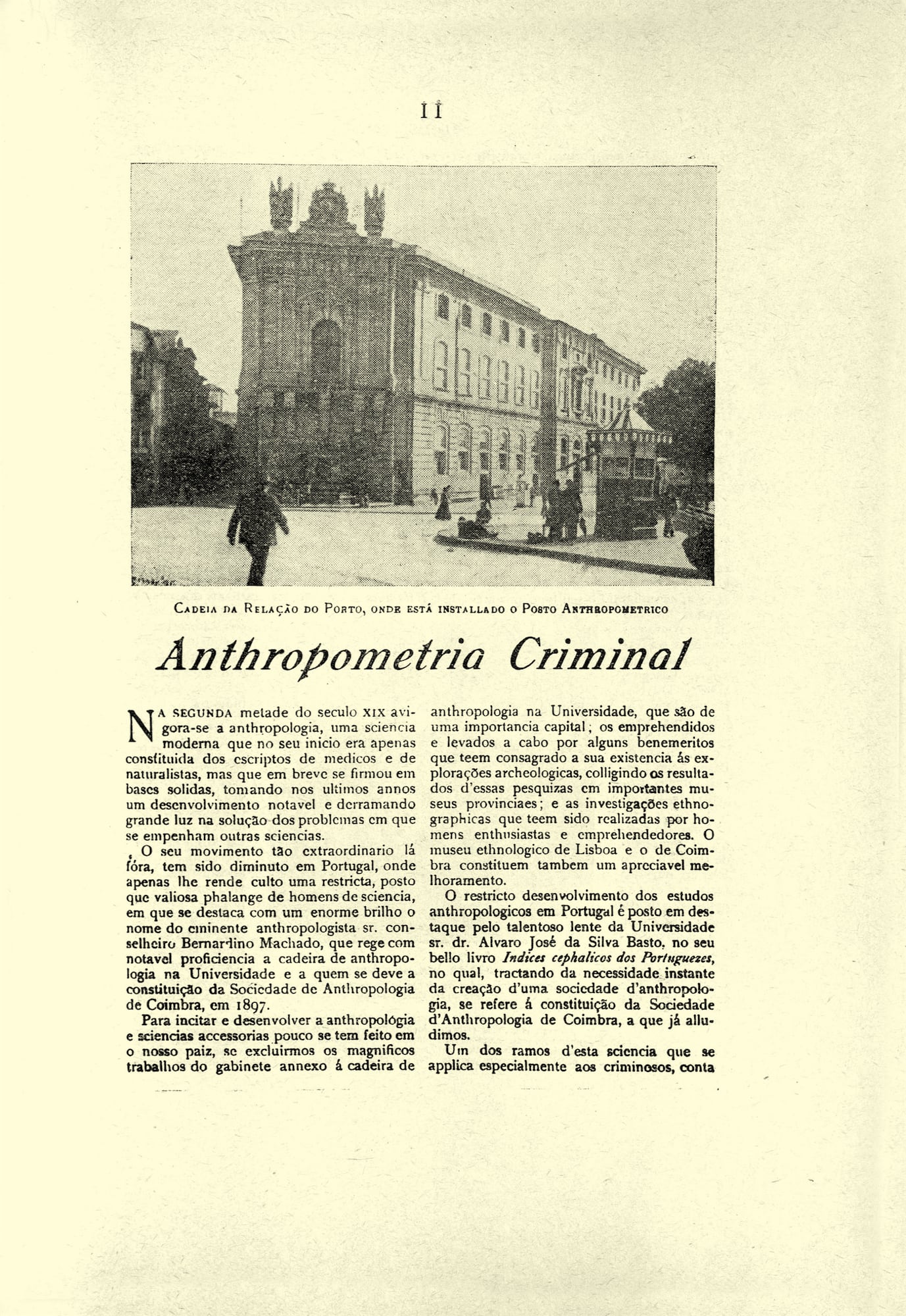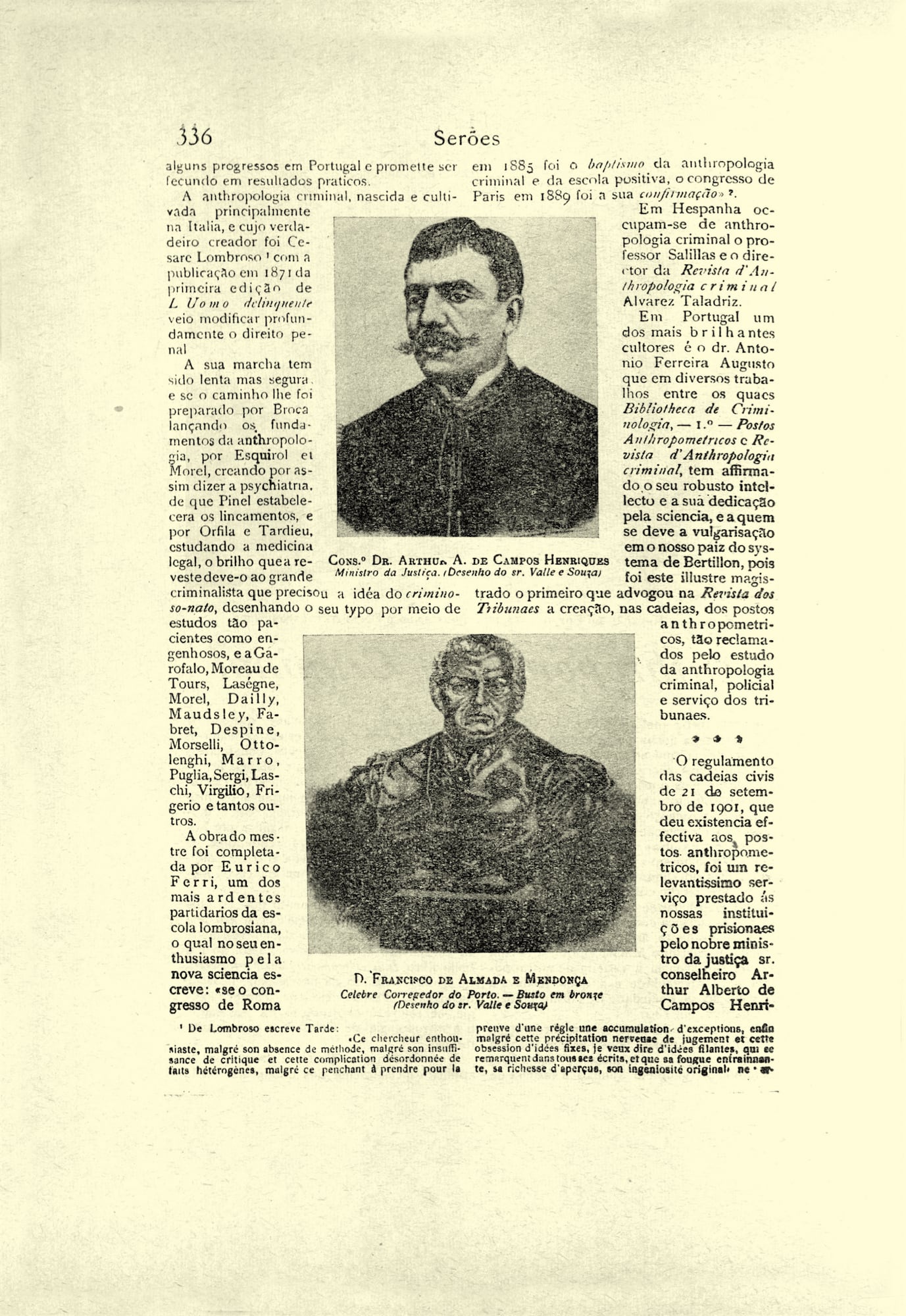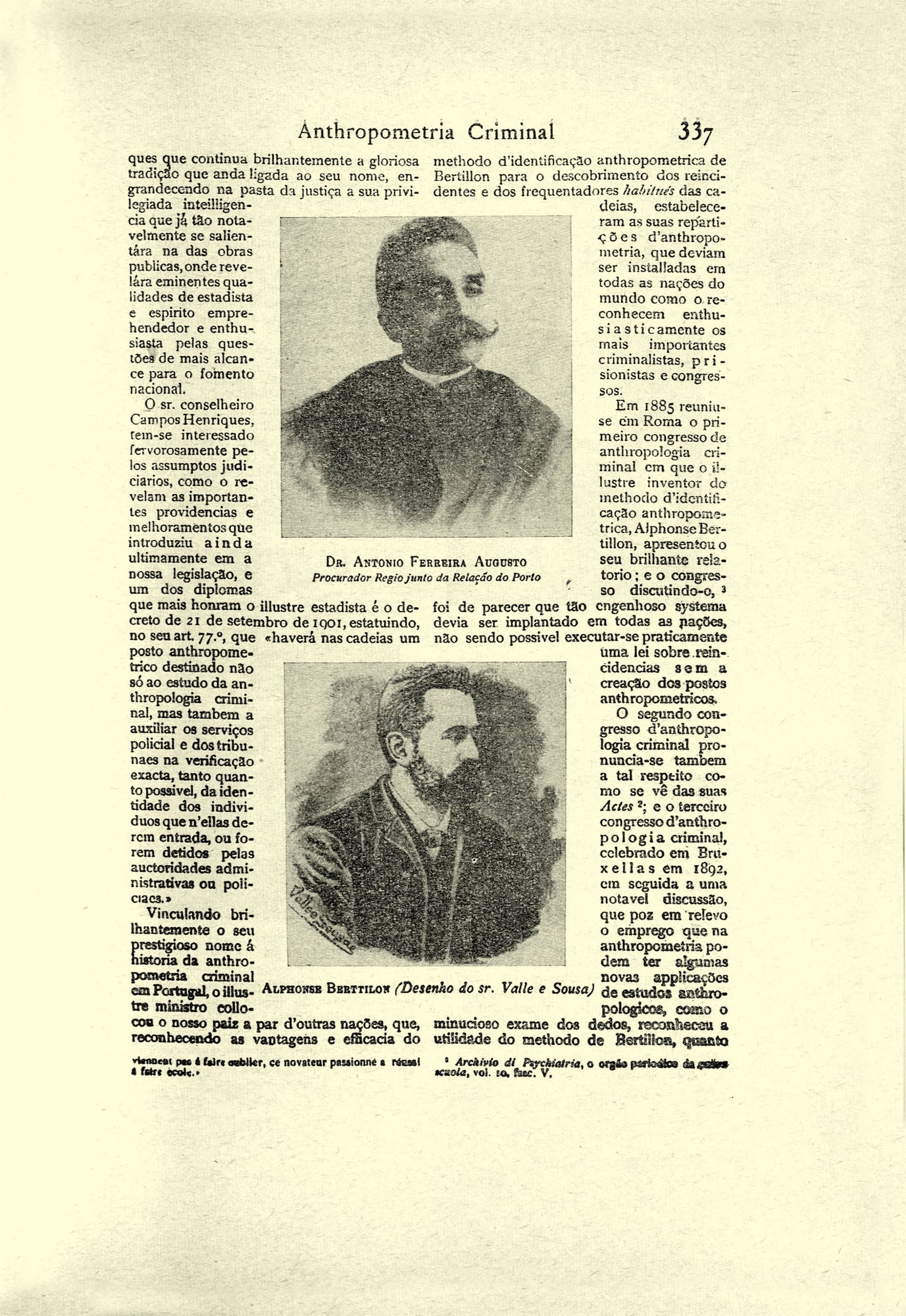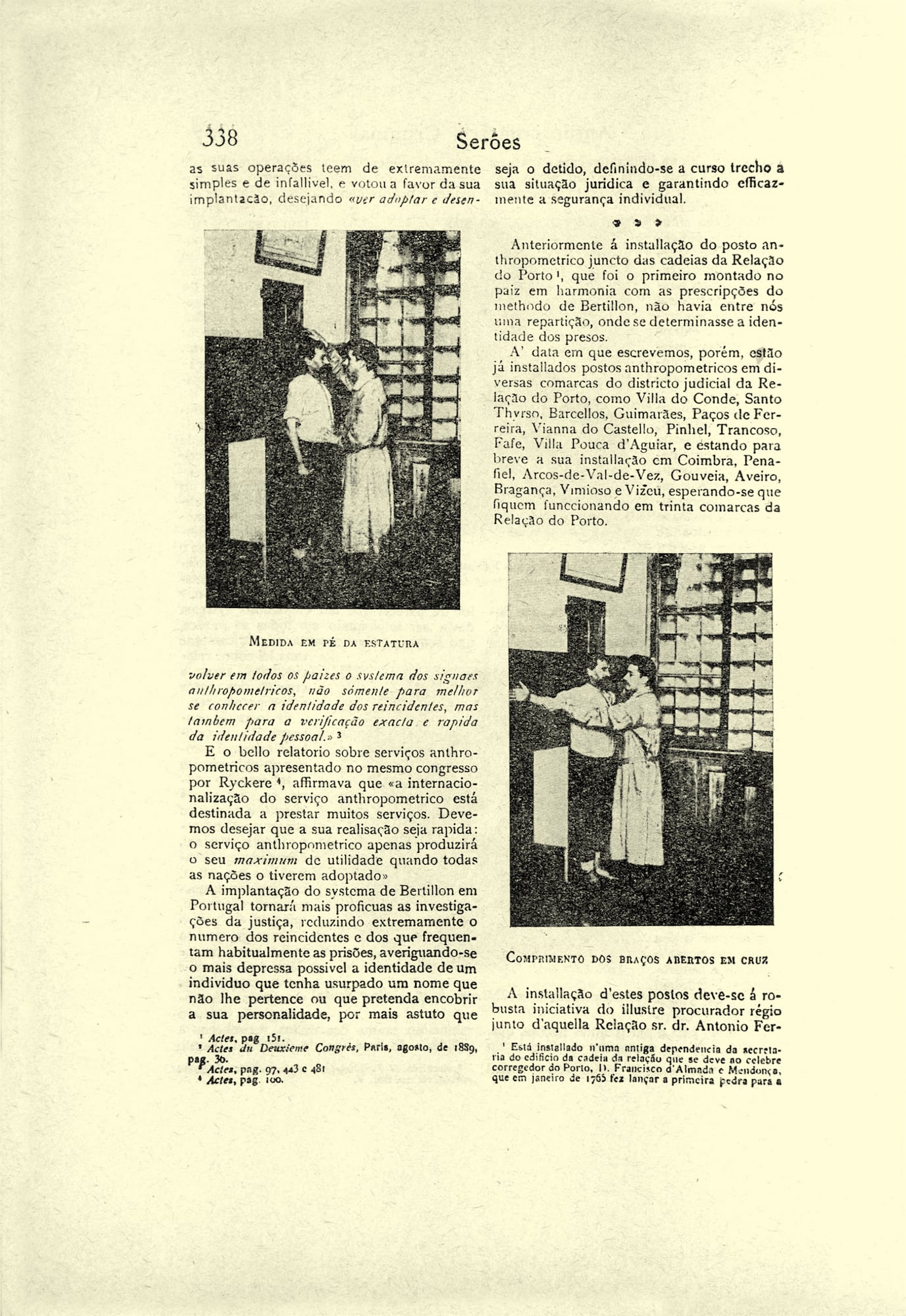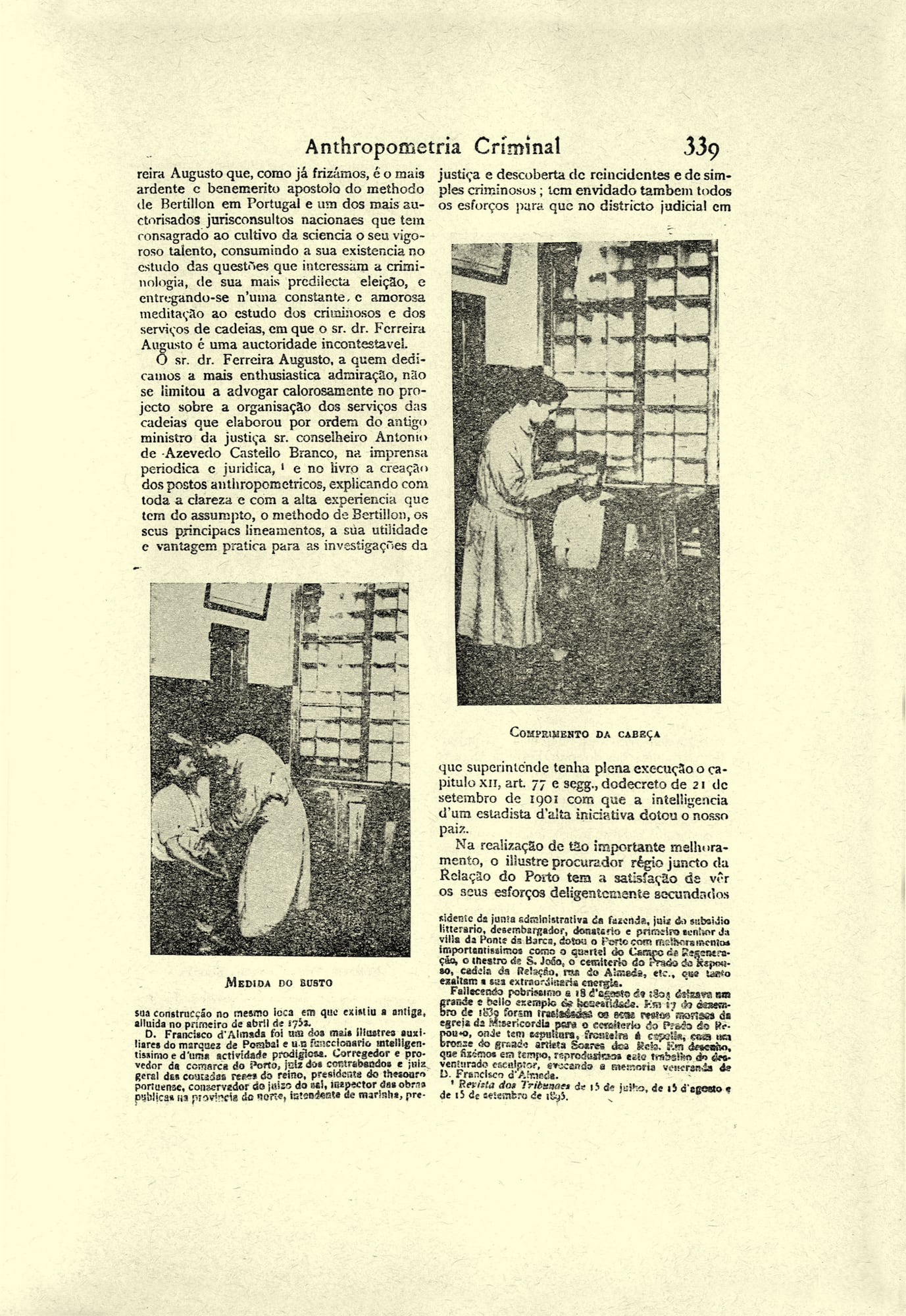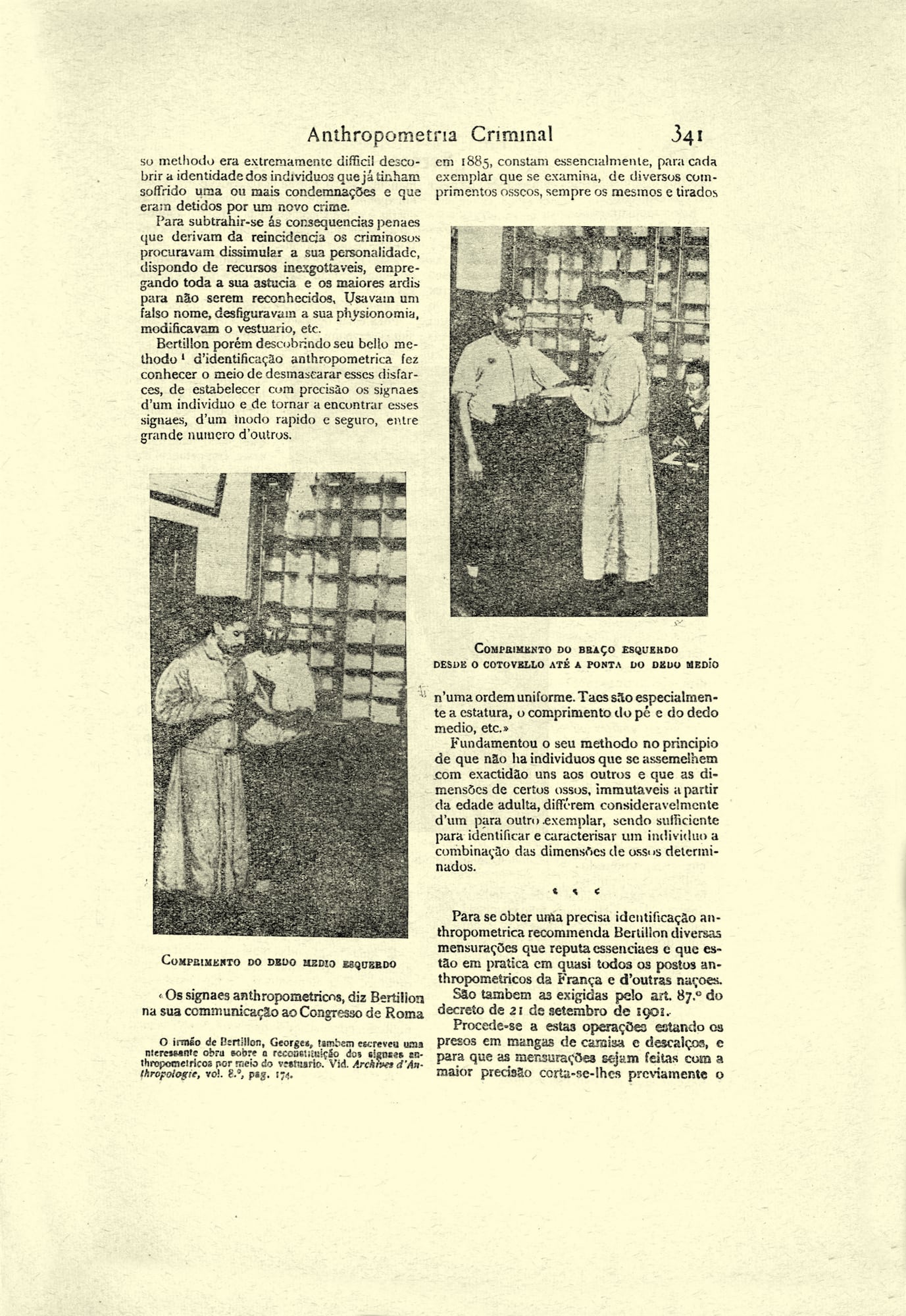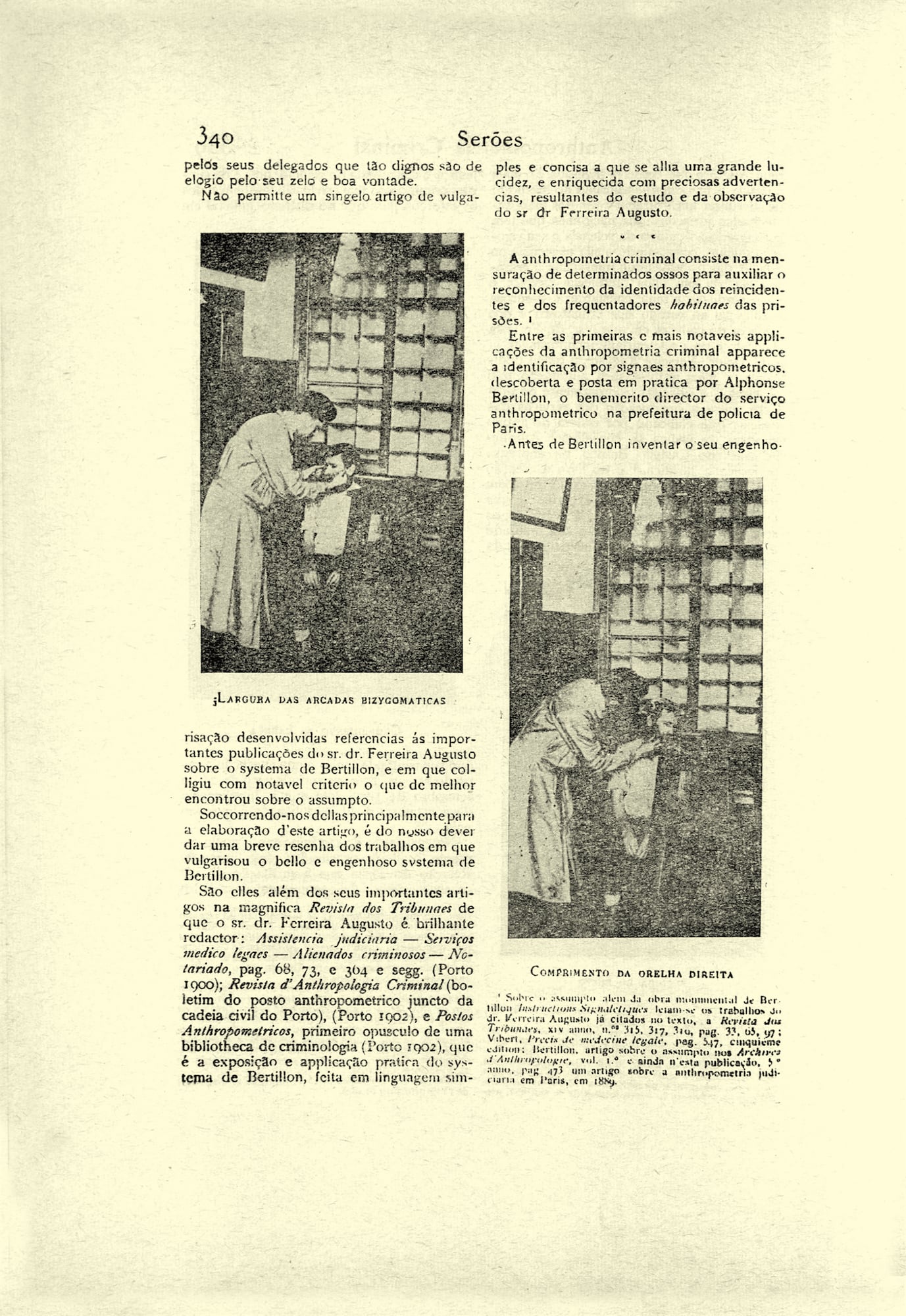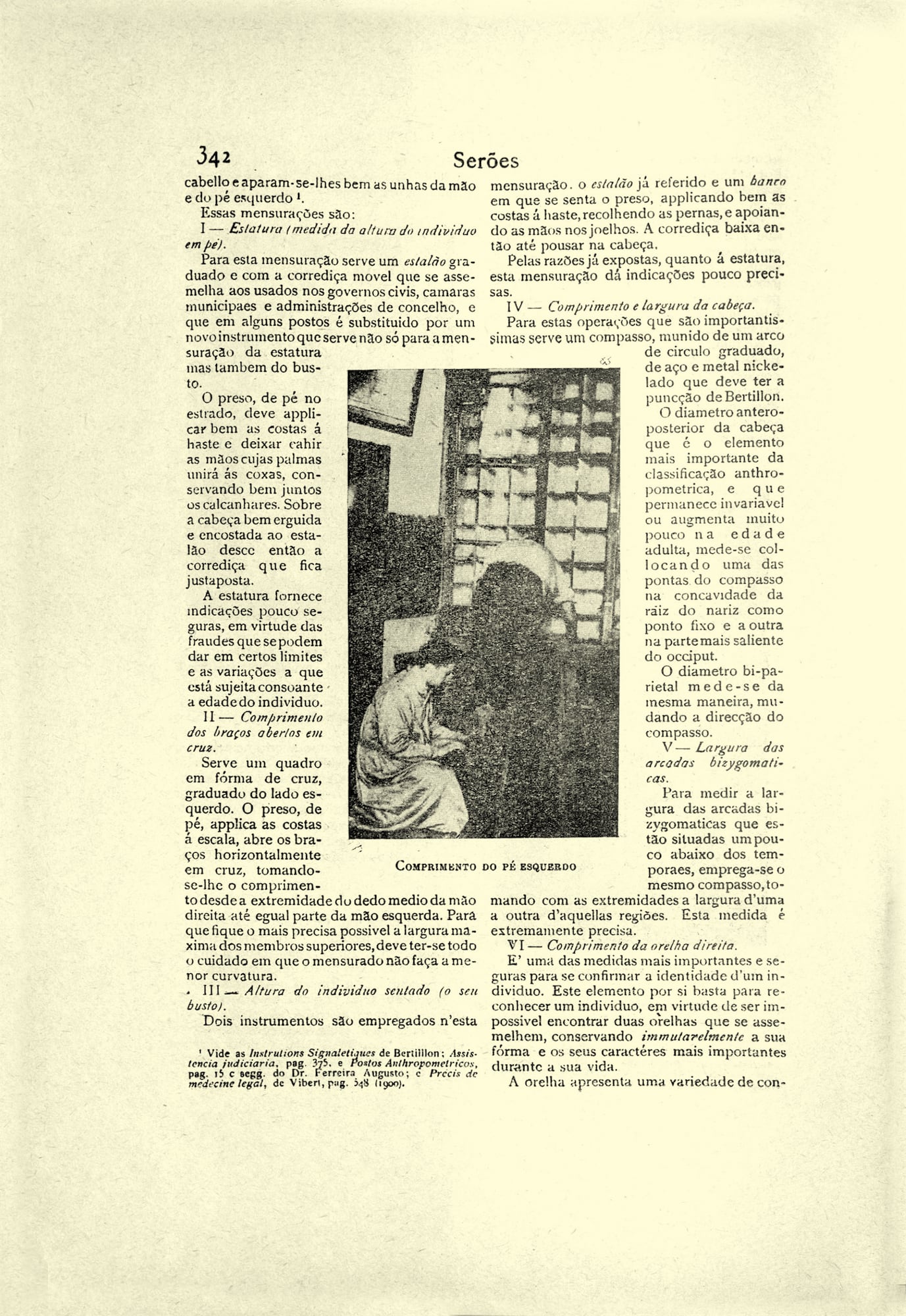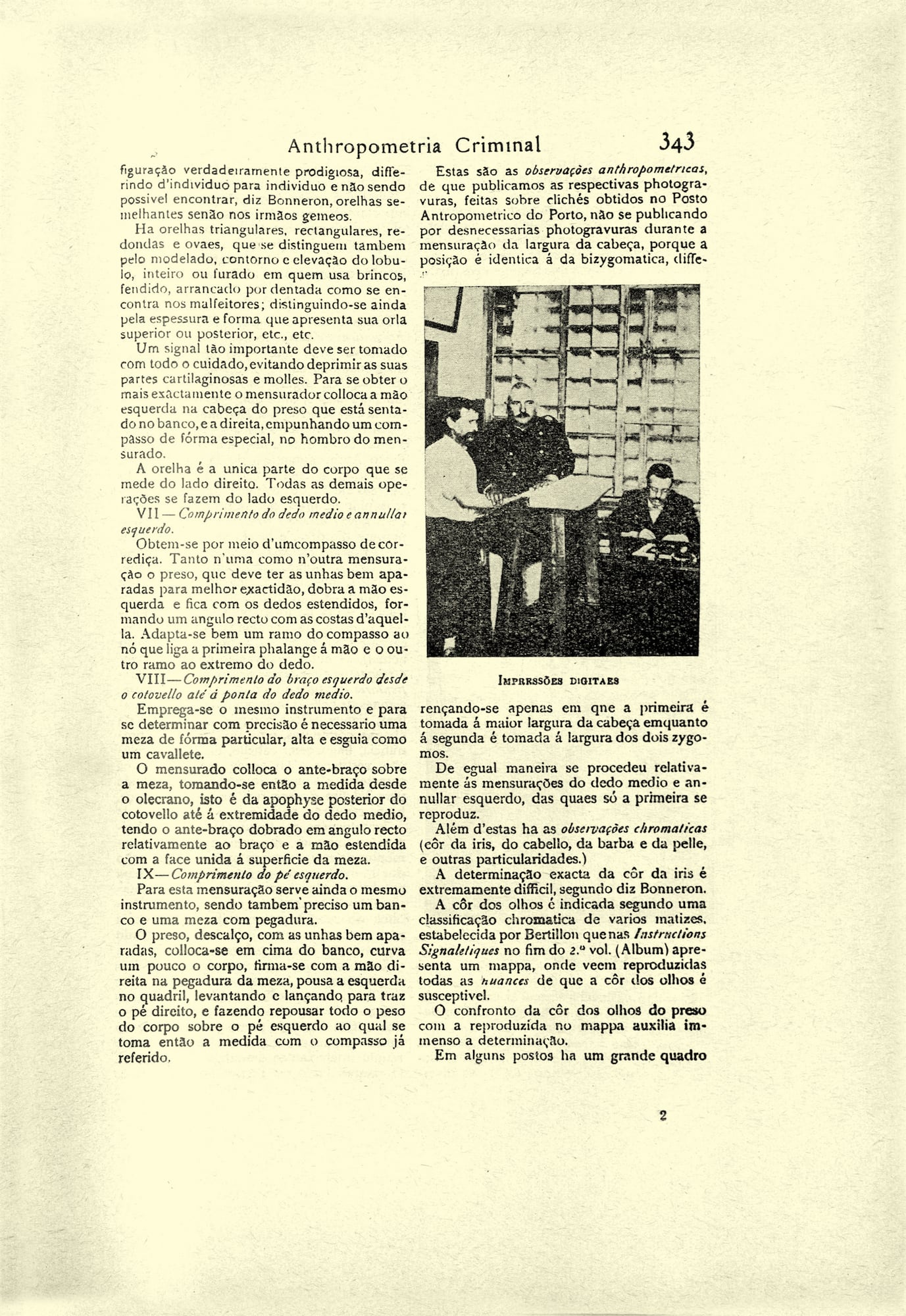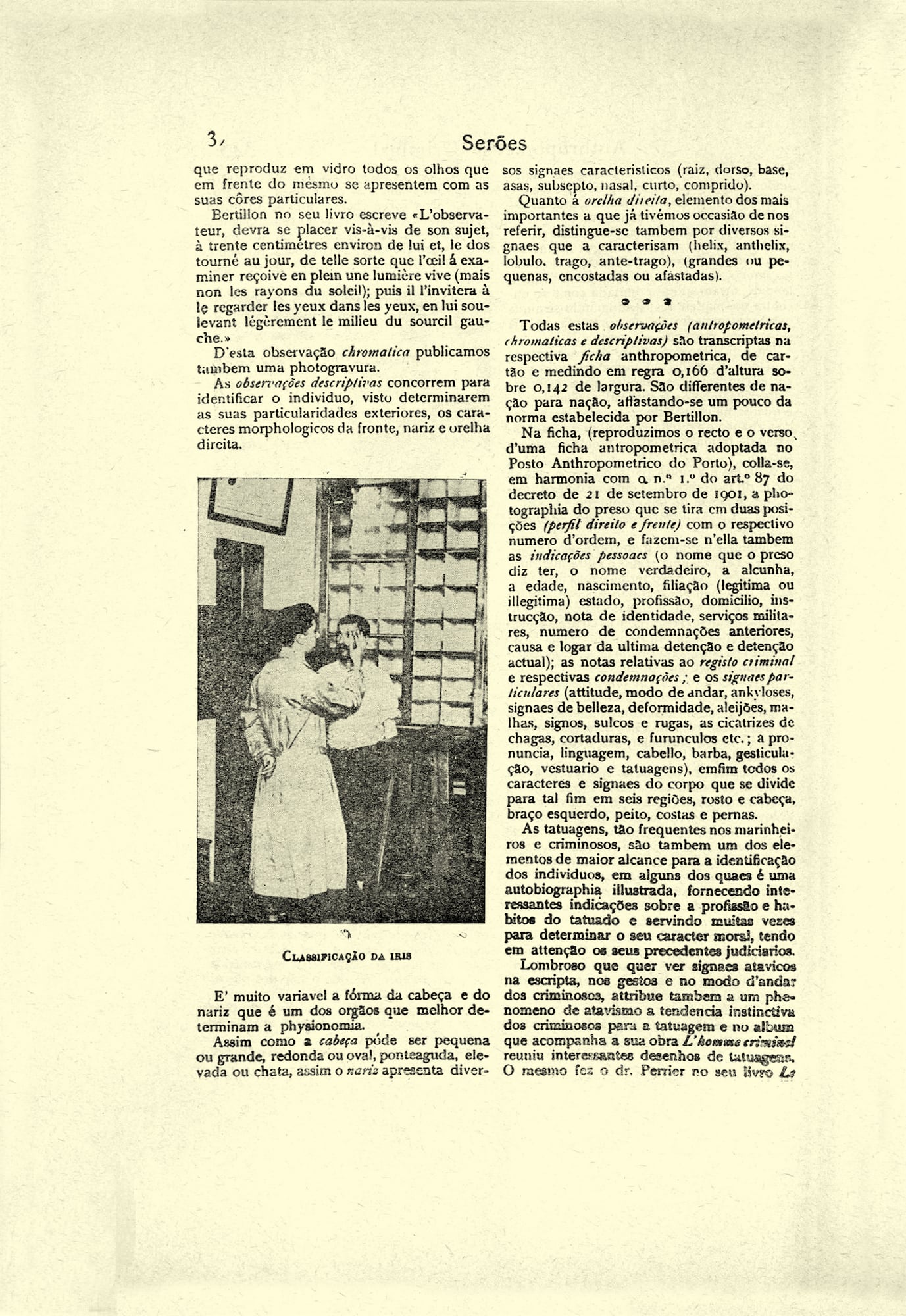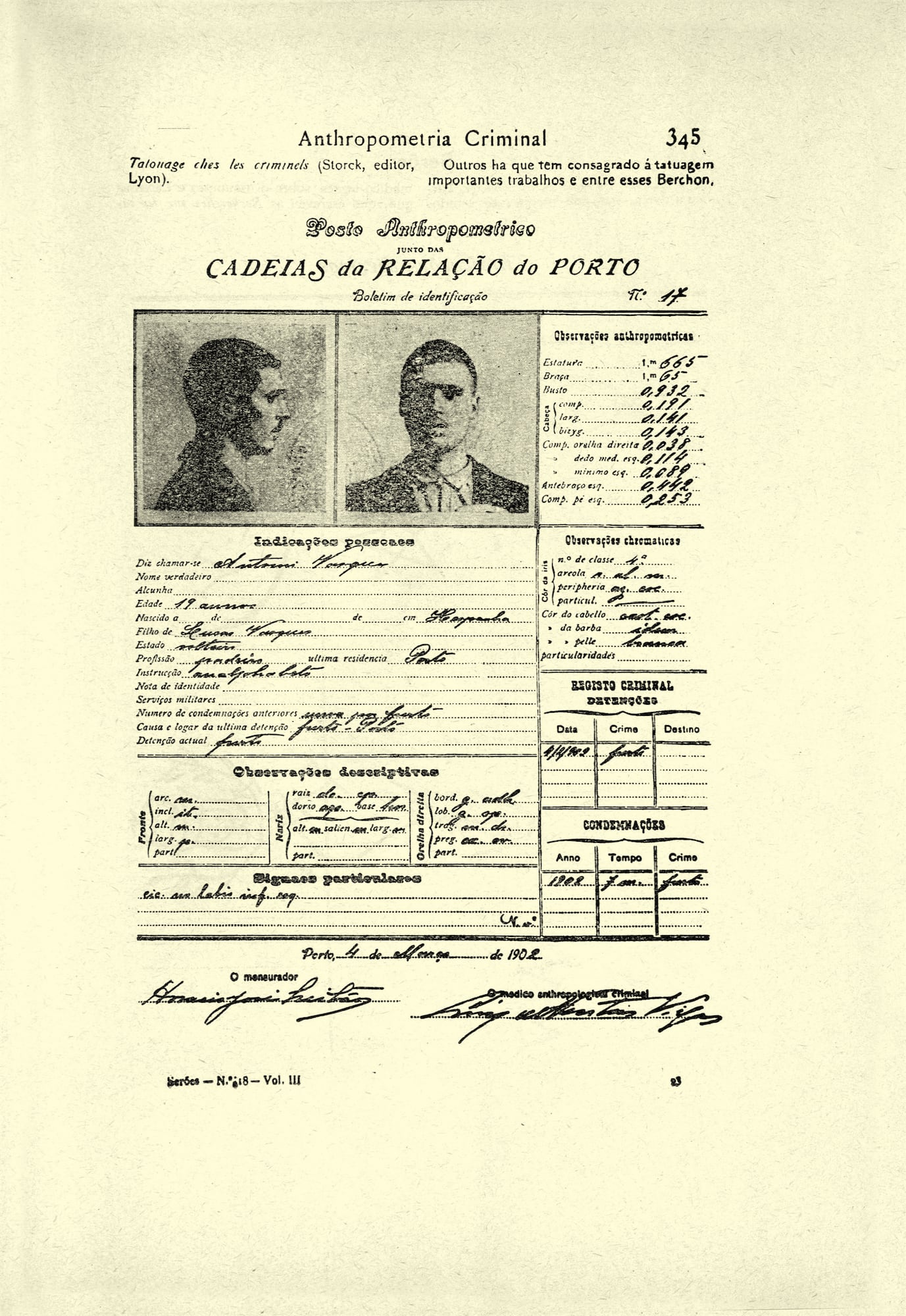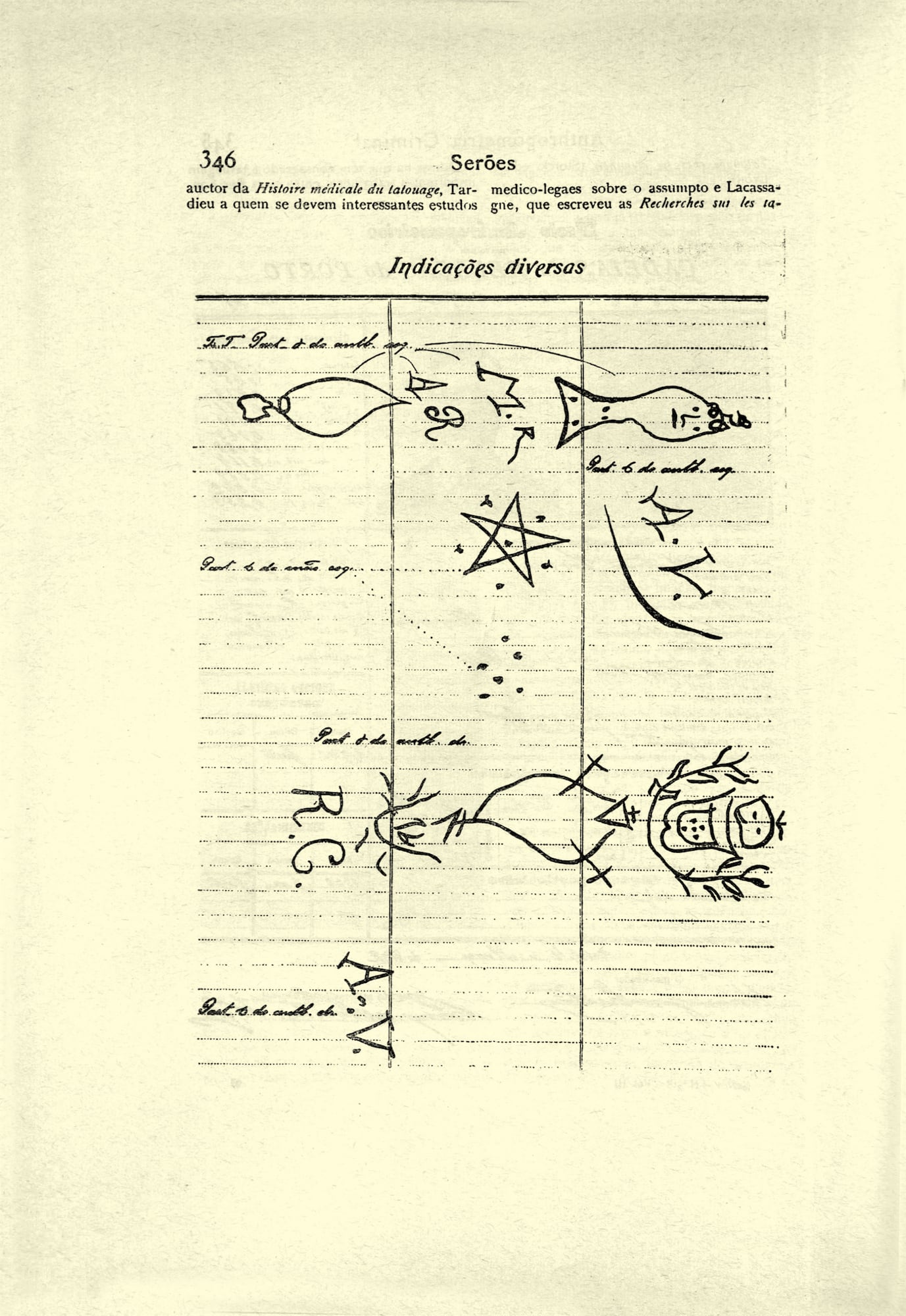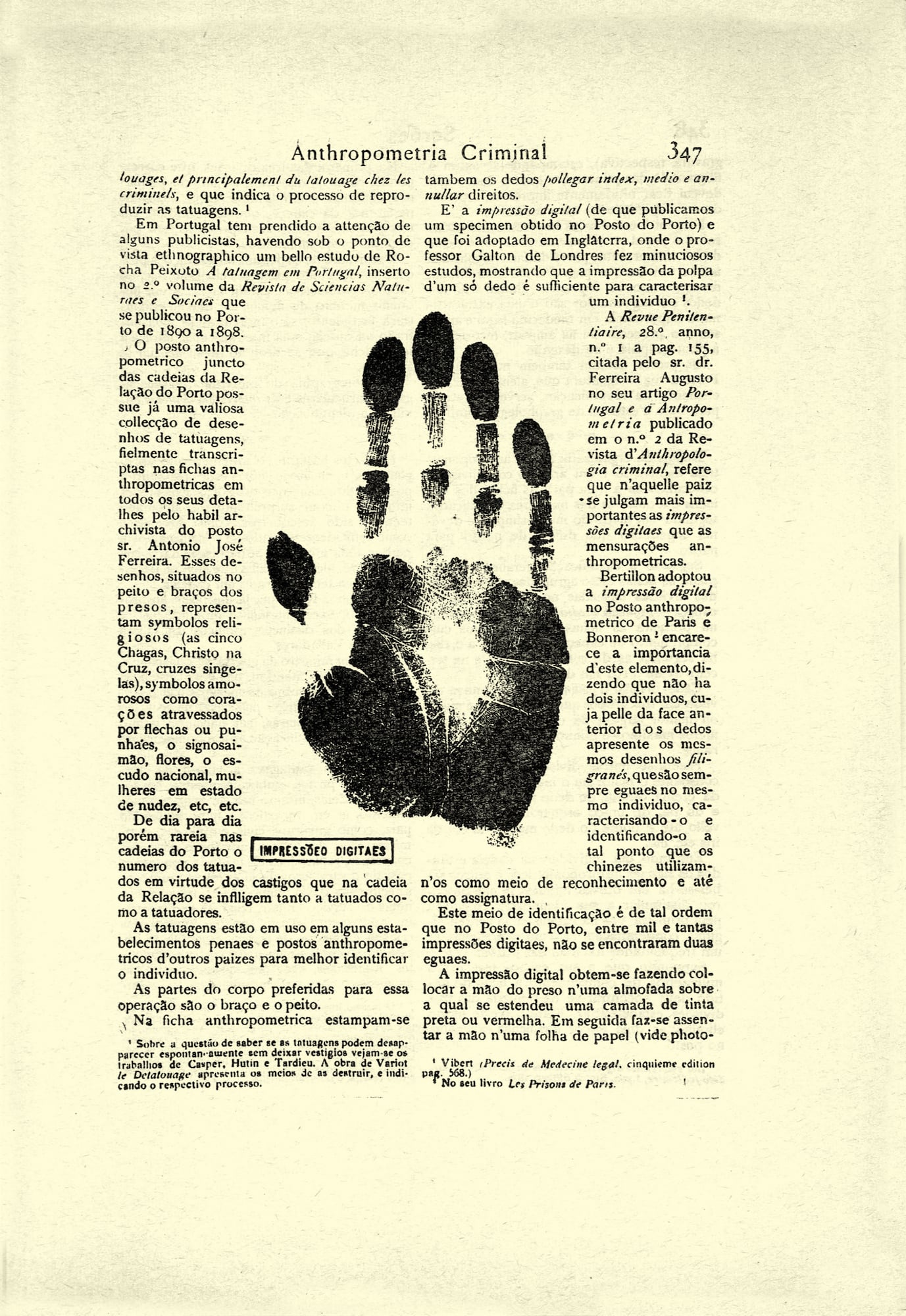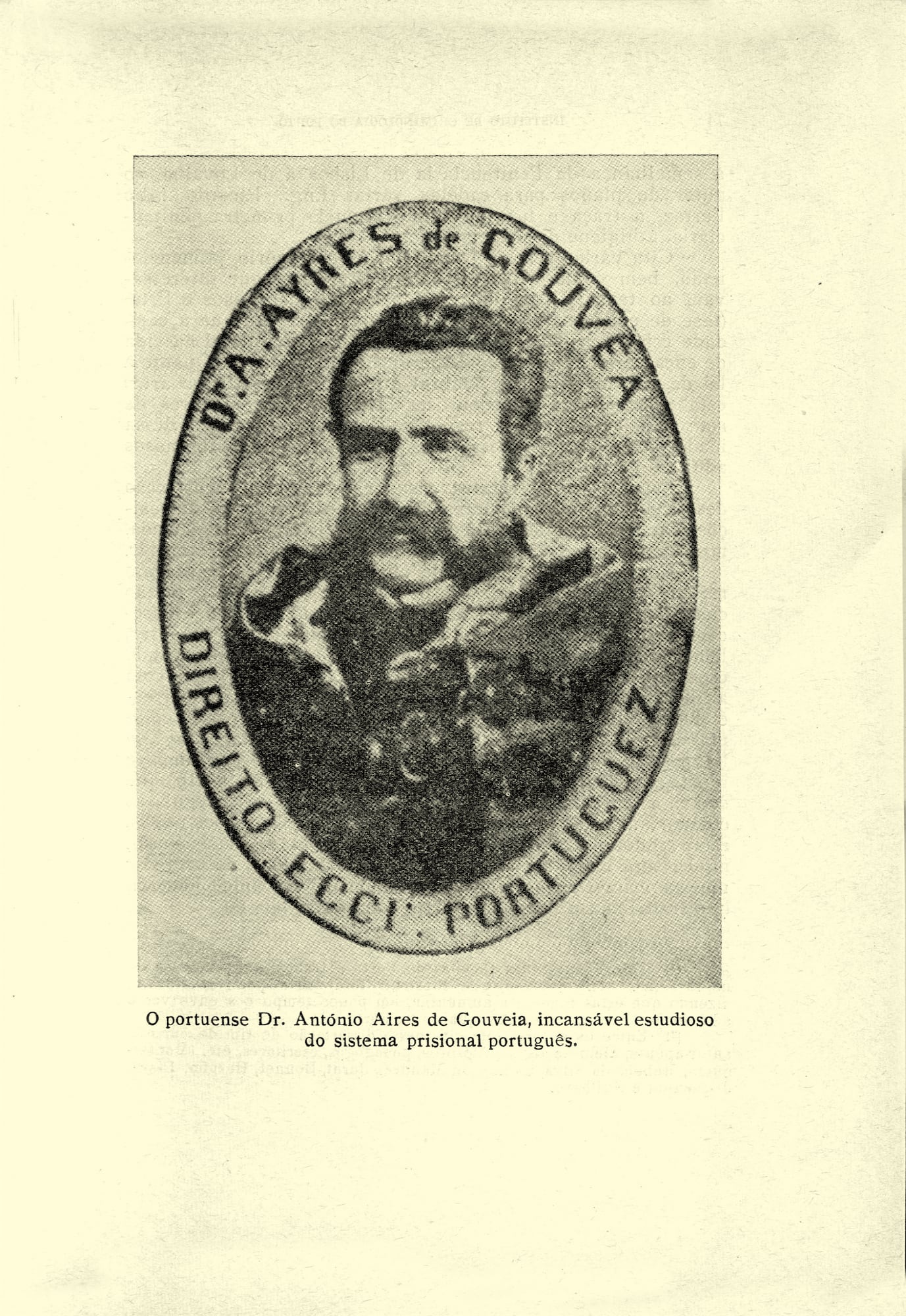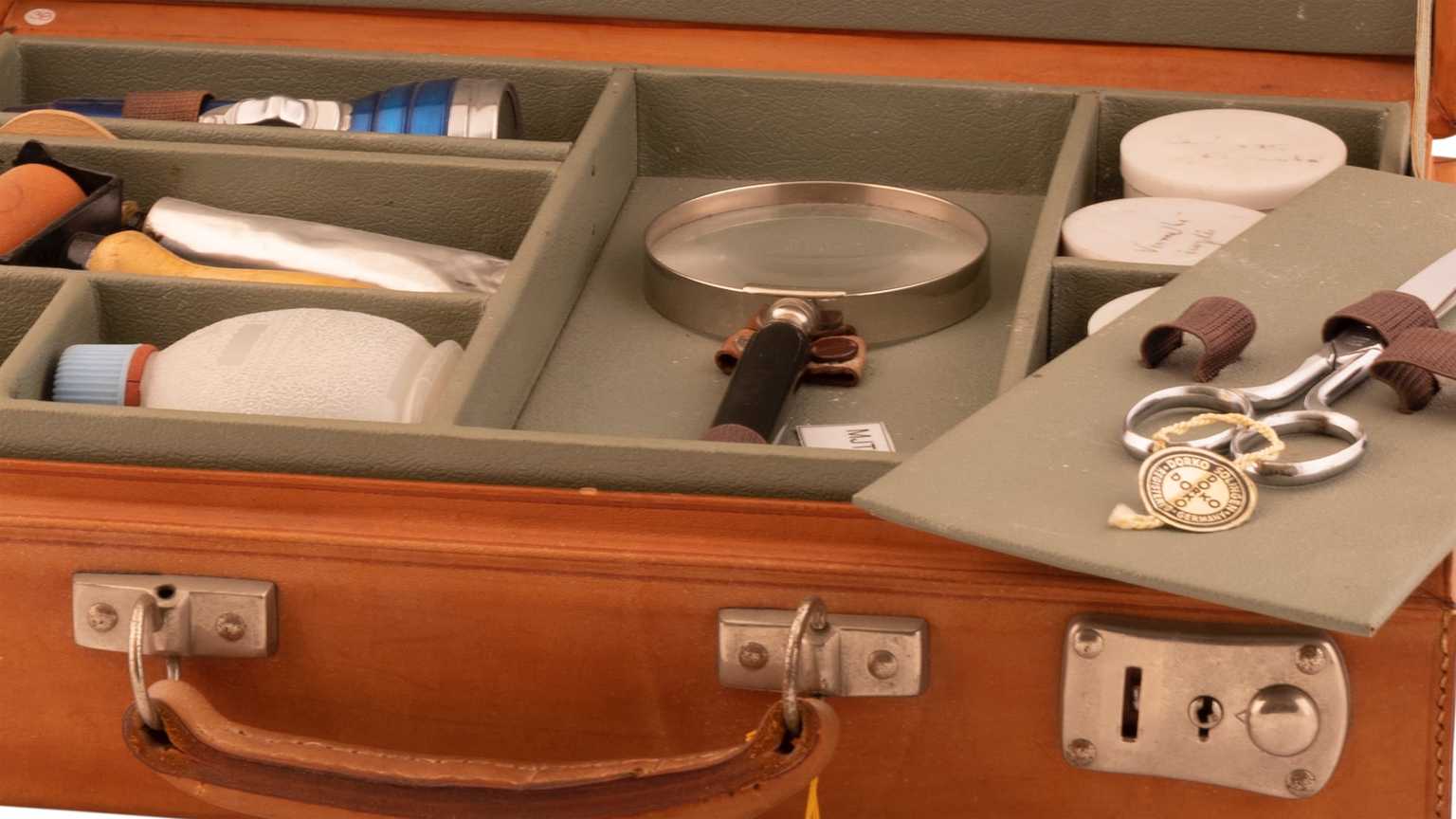
Collection
Fingerprinting Case
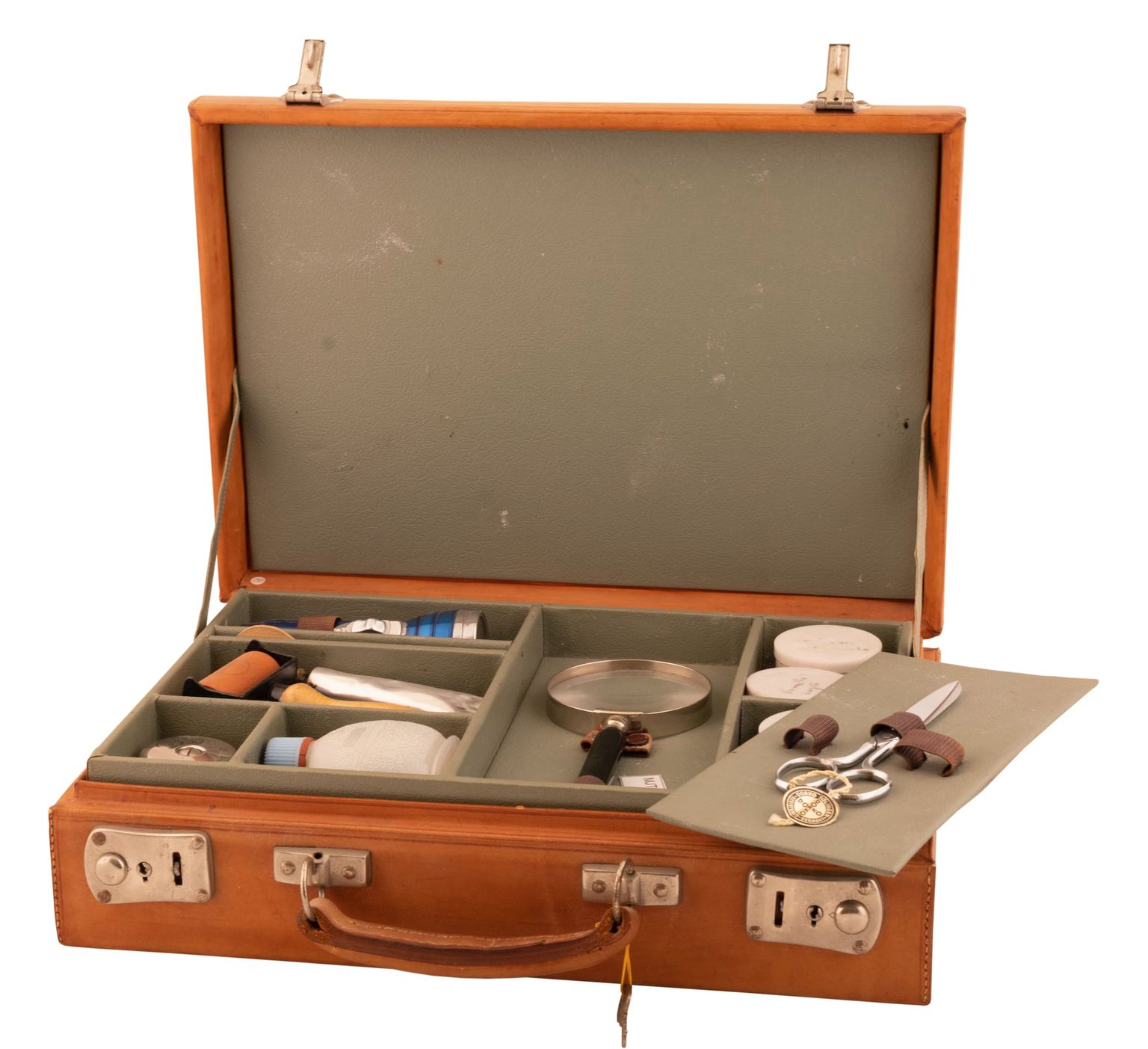
Fingerprinting case from the first half of the 20th century, containing various devices. It was used at the House of Appeal of Porto in the process of human identification through fingerprints.
© Extinct Criminal Courts of Porto
Anthropometric system
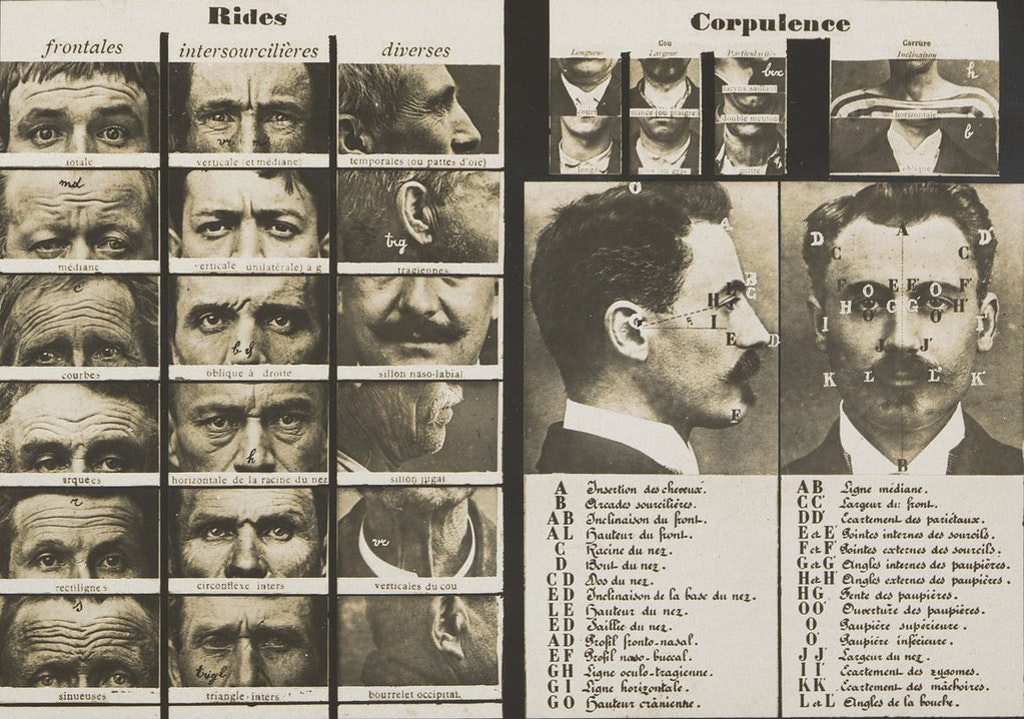
The first scientific system of human identification was anthropometric (c. 1882), developed by Frenchman Alfonse Bertillon. This system allowed fixing images of criminals through the different measurements of the human body (12 annotations). In Portugal anthropometric posts were created in civil jails according to the Law of August 17, 1899, approved by decree of September 21, 1901.
Dactyloscopy
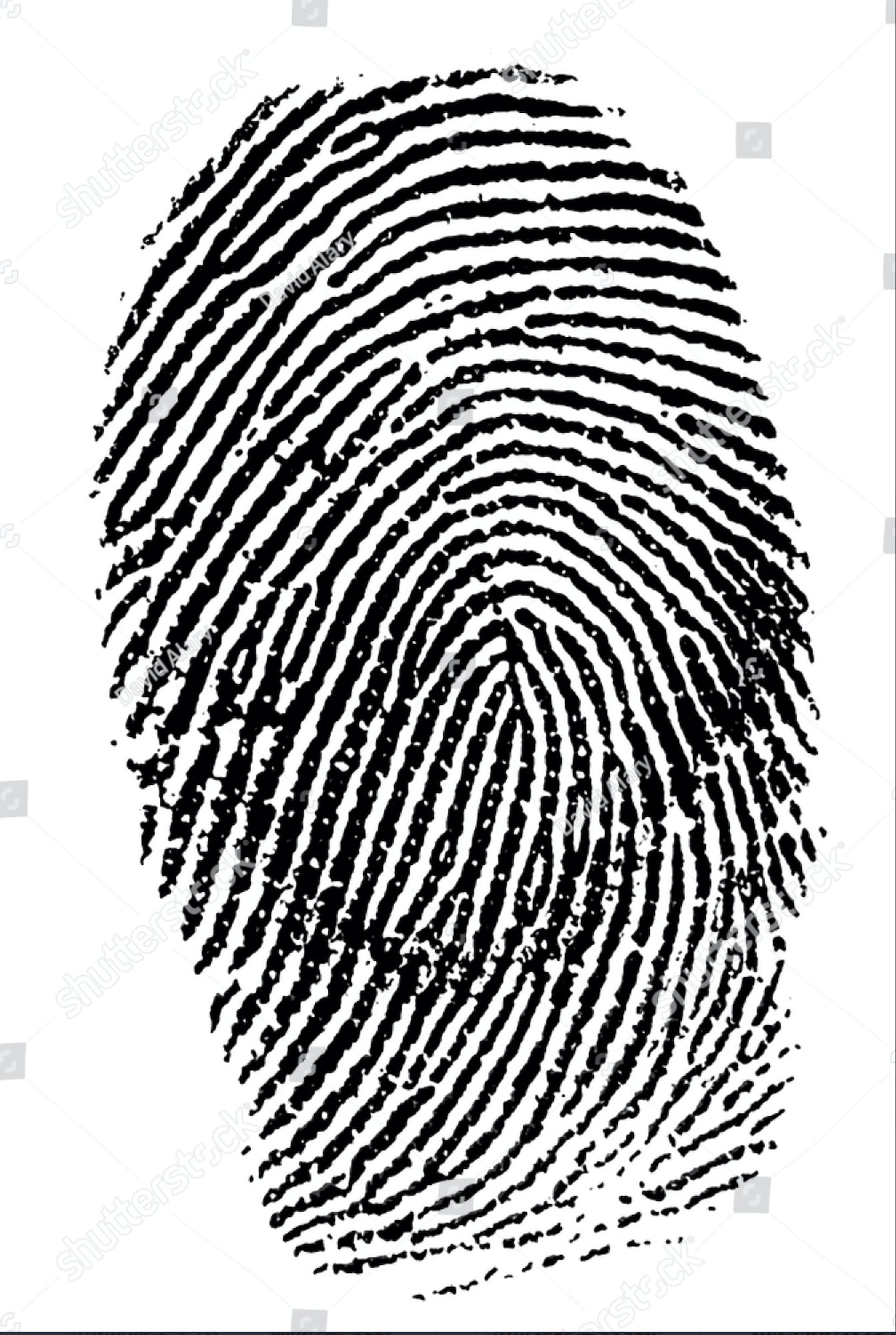
In parallel, another system was beginning to take shape, developed by the Englishman Francis Galton in the 90's of the 19th century, which demonstrated the probability of the non-existence of two equal fingerprints, thus establishing the scientific basis of fingerprinting.
Dactyloscopy or papilloscopy is a process of human identification through the dermal papillae (skin protrusions) existing in the palms of the hands and soles of the feet, also known as the study of fingerprints.
This technique is based on the stamping of fingerprints and consisted initially of taking the fingerprints of the ten fingers of the hands, to which a descriptive system of the types of designs formed by the orientation of the lines was applied.
This digital design is based on the postulate of perpetuity (the fingerprint exists since the 6th month of life until the putrefaction of the human body), immutability (fingerprints never change), variability (they change from finger to finger and from person to person) and possibility to be classified.
Anthropometric Post of the Court of Appeal’s Jail
Criminal Anthropometry Book
Oporto Court of Appeal / Old Archive Collection
The Anthropometric Post of the Court of Appeal’s Jail is inaugurated in 1902. In that same year, the bulletins of the prisoners of the Court of Appeal’s Jail already include a new sign: the fingerprint.
